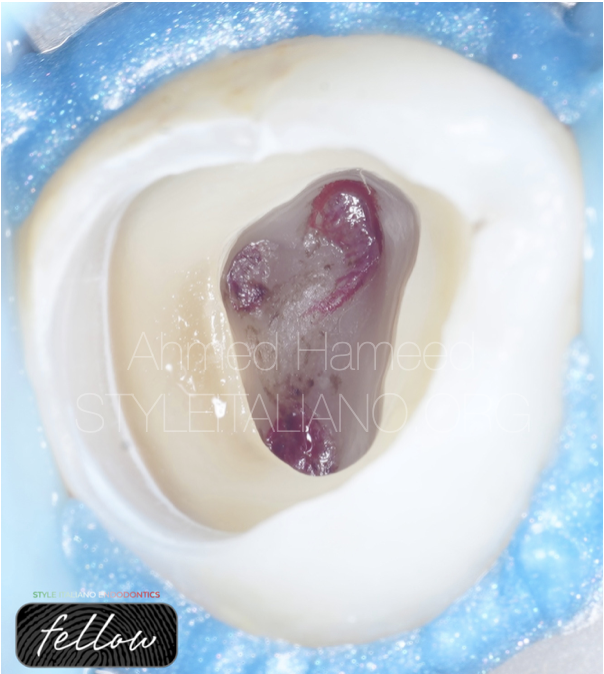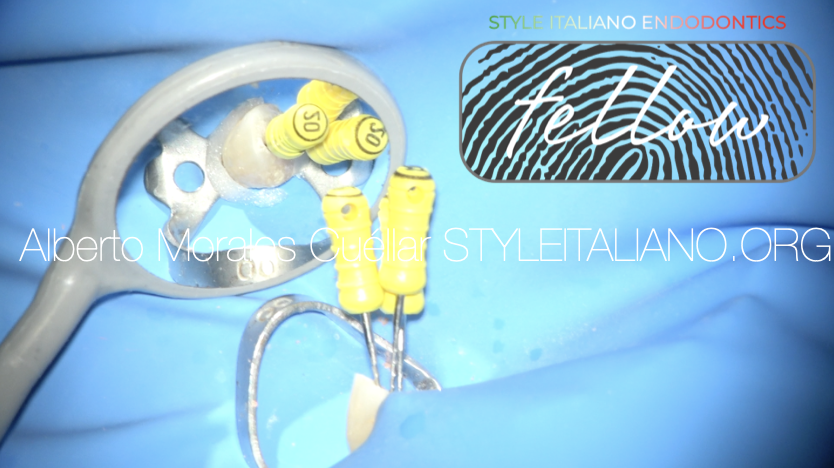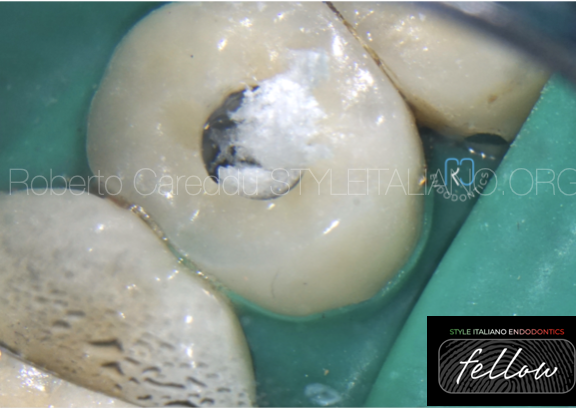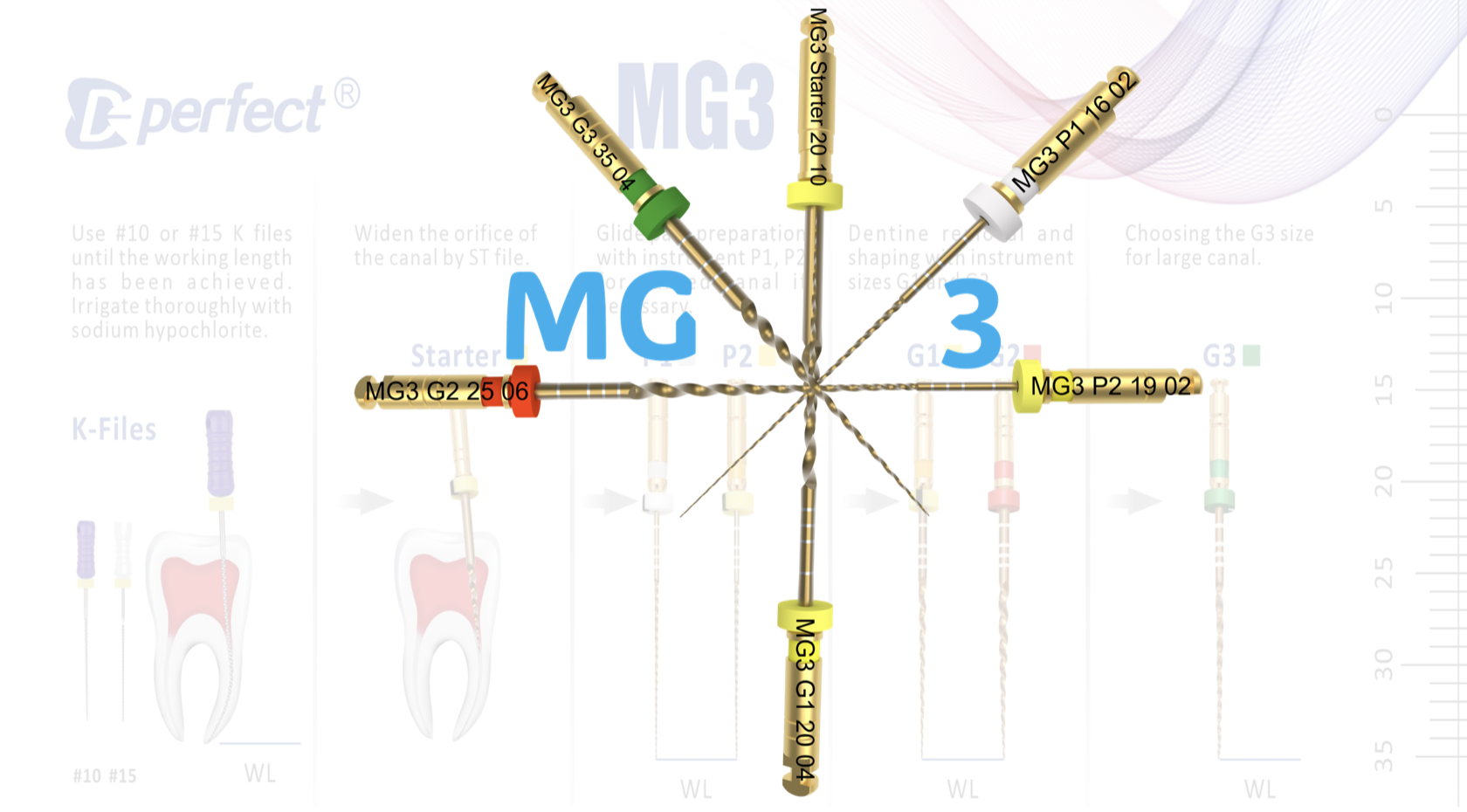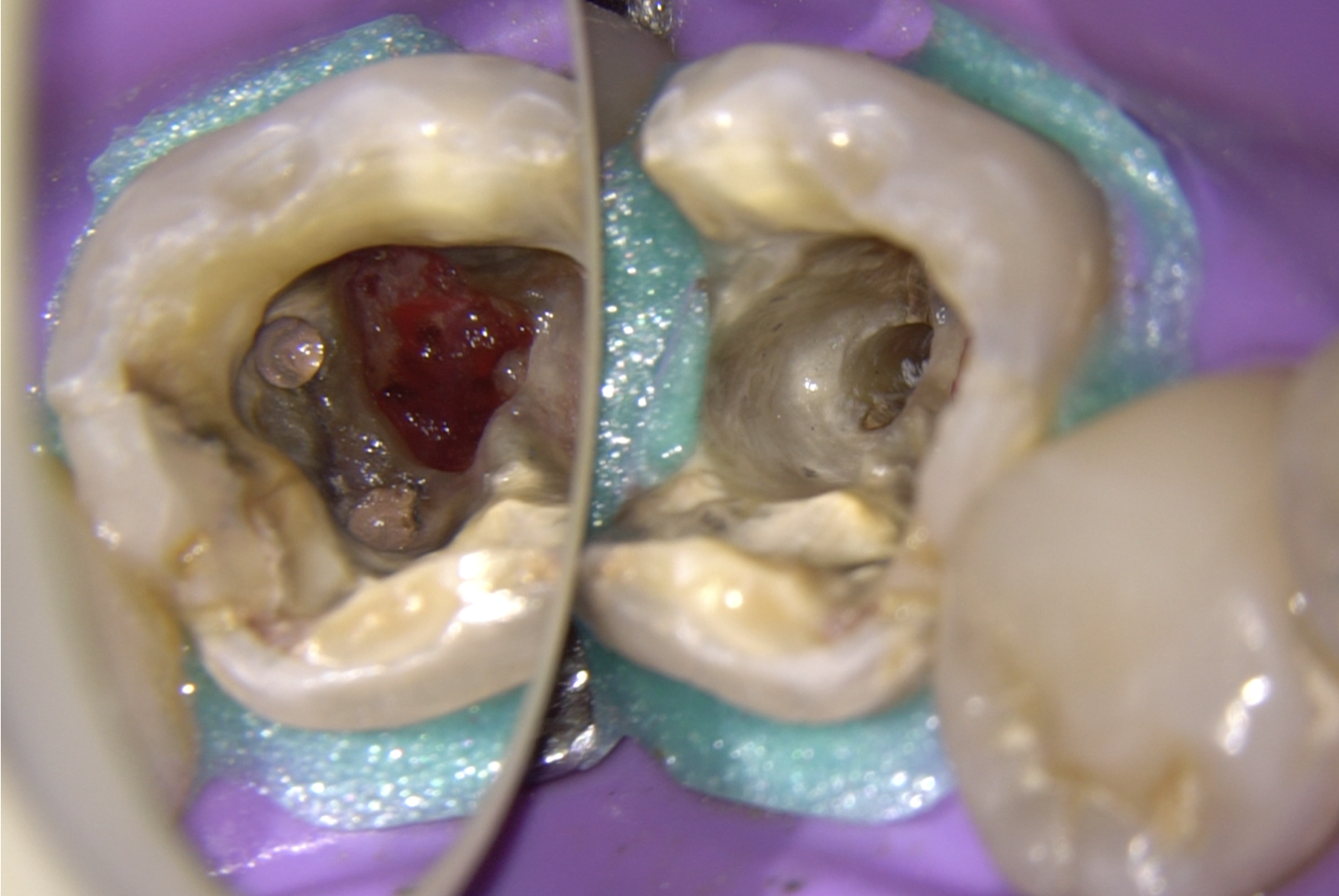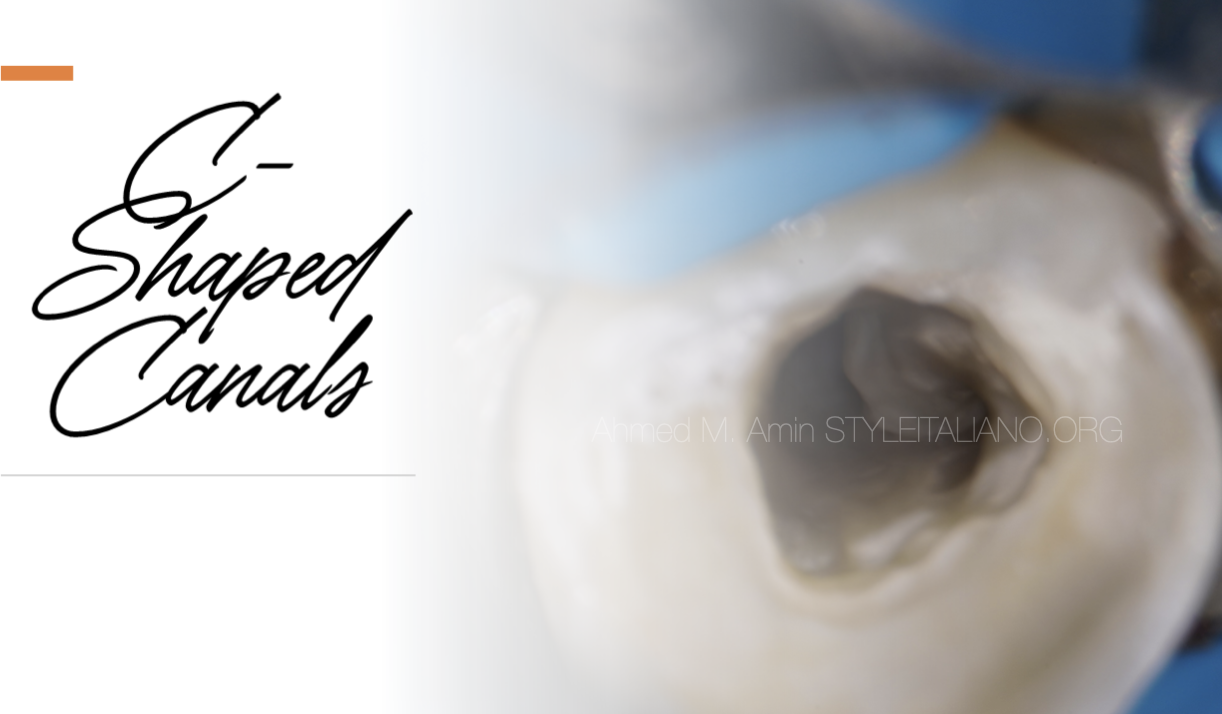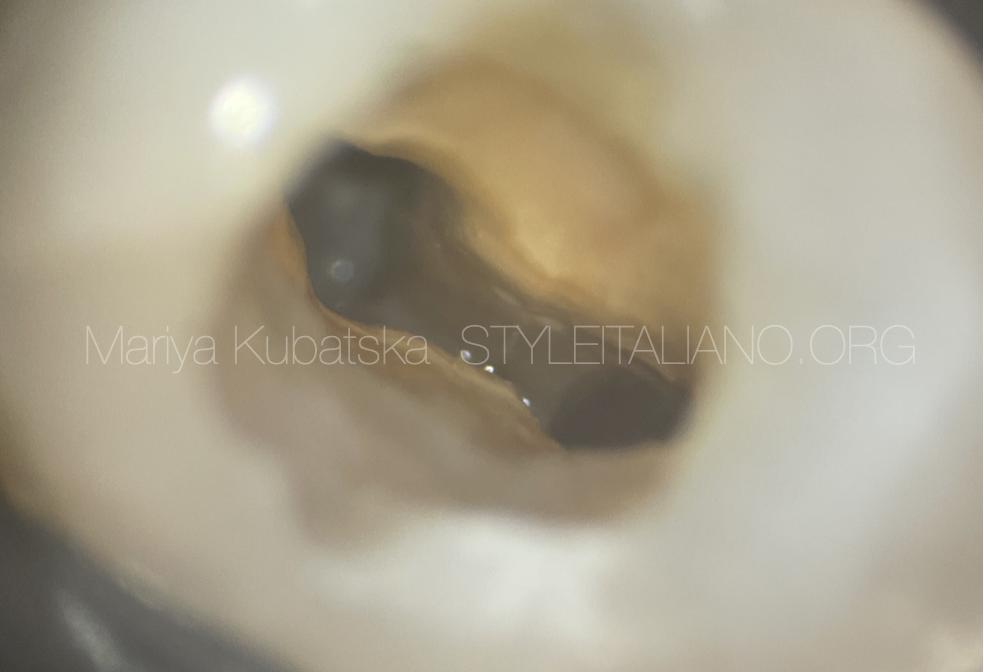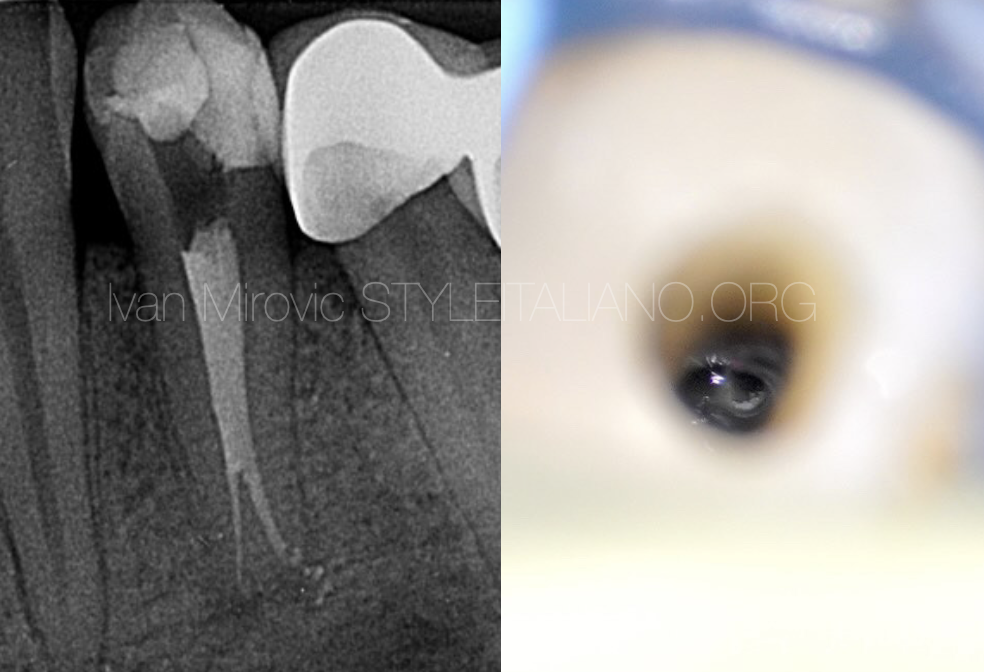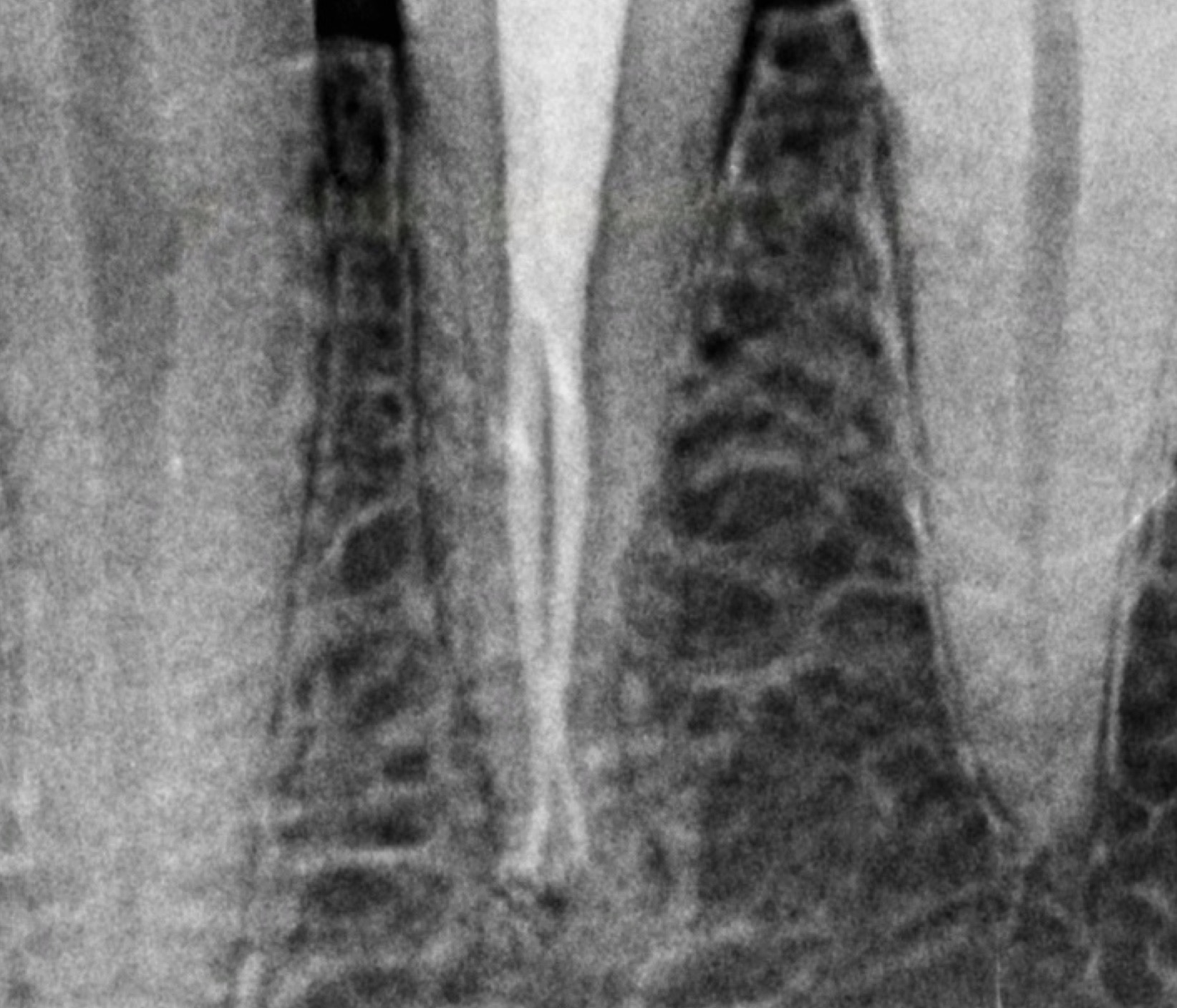One of the most common causes of failure in endodontics is missing canals.
The middle canal in lower molars is not an exception and has been studied by numerous authors in the literature.
Its prevalence ranges from 0,28% to 53,8% and it’s specially presents in the mesial root.
Using different X-ray angulations or with the help of CBCT we can confirm its existence.
Understanding the anatomy of the teeth is a key factor for the success of our treatment.
In this case we are treating a previously treated lower molar with some hidden anatomy.




